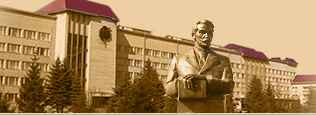HUMAN-GEOGRAPHICAL DISCIPLINES: ROLE IN SUBJECT SPECIFIC COMPETENCIES FORMATION.
The main features of human-geographical knowledge formation in higher school are regarded. The basis for the modernization of geographical higher education is to achieve a system of competences in the process of learning of programs on human geography. Understanding of geographical literacy components through the European experience of the Tuning project and Herodot network are examined. Formulated competencies, skills and knowledge on the example of selected human-geographical educational disciplines (“Social Geography”, “Geography of World Economy” and “Territorial-productional Complexes”) that teached at the Department of Economic and Social Geography in Ivan Franko National University of Lviv are regarded. Their correspondences with stated geographical literacy components are enlighten. Human geography in the curriculum requires consideration of spatial skills, spatial relationships and distributions as essential descriptive terms, understanding of processes and systems, relationships between people and their environment, that are fundamental to the subject. Visual, information and numerical, and personal, social and cultural communication as the issues of geographical literacy are basic for each of its components. Development of generic and subject-specific competences under human geographical courses aims to improve geographical literacy of students. Complexity and interdisciplinarity of human-geographical skills and knowledge arise its role in preparing Bachelor of Geography.
Keywords: human-geographical educational disciplines, elective disciplines, competences, knowledge and skills, generic competencies, subject specific competencies, geographical literacy.
References:
- Aspects of State of Geography in European higher education. TUNING Geography: a report of findings and outcomes / K. Donert. – Liverpool: HERODOT Publications, – 53 p. [Electronic resource] / Сайт TUNING Educational Structures in Europe. – Mode of access: http://www.unideusto.org/tuningeu/subject-areas/geography.html.
- Bilets’kyy M. I. Navchal’na prohrama, seminars’ki, praktychni, samostiyni ta testovi zavdannya z kursu “Terytorial’no-vyrobnychi kompleksy” dlya studentiv heohrafichnoho fakul’tetu / I. Bilets’kyy, L. I. Kotyk. – L’viv: Vyd. tsentr LNU im. I. Franka, 2009. – 72 s.
- Bilets’kyy M. I. Prohrama, metodychni vkazivky do praktychno-seminars’kykh zanyat’ ta testovi zavdannya z navchal’noyi dystsypliny “Sotsial’na heohrafiya” dlya studentiv heohrafichnoho fakul’tetu / I. Bilets’kyy, I. V. Vanda, L. I. Kotyk. – L’viv: Vyd. tsentr LNU im. I. Franka, 2011. – 108 s.
- Vstupne slovo do Proektu Tyuninh – harmonizatsiya osvitnikh struktur u Yevropi. Vnesok universytetiv u Bolons’kyy – 108 s. [Elektronnyy resurs] / Sayt TUNING Educational Structures in Europe. – Rezhym dostupu: http://www.unideusto.org/tuningeu/ images/stories/documents/General_Brochure_Ukrainian_version.pdf.
- Zakon Ukrayiny “Pro vyshchu osvitu” [Elektronnyy resurs] / Ofitsiynyy sayt Verkhovnoyi rady Ukrayiny. – Rezhym dostupu: http://zakon4.rada.gov.ua/laws/show/1556-18.
- Kuzyk S. P. Heohrafiya svitovoho hospodarstva: navch. posibnyk / P. Kuzyk, O. I. Mamchur, I. V. Vanda. – L’viv: LNU im. I. Franka, 2014. – 312 s.
- Rekomendatsiya 2006/962/YeS Yevropeys’koho Parlamentu ta Rady (YeS) “Pro osnovni kompetentnosti dlya navchannya protyahom us’oho zhyttya” vid 18 hrudnya 2006 roku [Elektronnyy resurs] / Ofitsiynyy sayt Verkhovnoyi rady Ukrayiny. – Rezhym dostupu : http://zakon4.rada.gov.ua/laws/show/994_975.
- Shabliy O. I. Osnovy zahal’noyi suspil’noyi heohrafiyi: pidruchnyk / I. Shabliy. – L’viv: LNU im. I. Franka, 2003. – 444 s.
- Shyshсhenko P. G. Standarty geografichnoyi osvity v Ukrayini: global`nyj ta regional`nyj vymiry / G. Shy`shhenko, Ya. B. Olijny`k, O. Yu. Dmytruk, N. V. Munich // Uch`onye zapisksi Tavry`cheskogo nacyonal`nogo universiteta im. V. I. Vernadskogo. – Seriya “Geografiya”. – Tom 17 (56). –№ 4 (2004). – S. 55–64.
